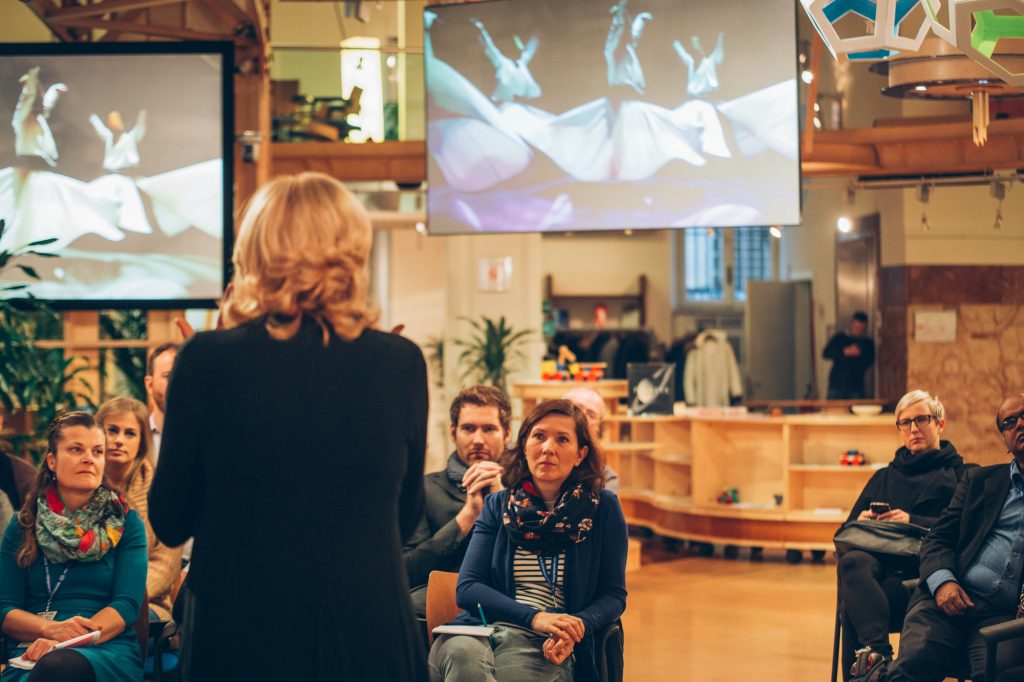25/10 Crowd Sourcing

Rapidly generate and sift a group’s most powerful actionable ideas
Overview
25/10 is a group game in which twenty minutes can be enough time for a large team to generate and organize great, daring ideas. It creates a playful atmosphere and allows for dynamic team thinking and bold next steps.
How to use it
- Emphasize the team’s ability to quickly tap into their own talent.
- The results are more likely to last in the long term, as results are generated from within the team (without imported advice).
- Spark synergy among diverse views and build consistency at the same time.
- Encourage novice innovators toward boldness and practical first steps.
- Prioritize ideas and galvanize the team after an Open Space.
- Illuminate bold ideas at the start of a conference or task force meeting.
How to apply it
Start:
Participants are asked, “If you were 10 times bolder, what big idea would you recommend? What first step would you take to get started?”
Setting:
Open space without chairs or tables. Everyone standing and milling at the same time. Everyone has an equal opportunity to contribute.
Materials:
Recipe, file, or index cards for each person.
Time/Steps:
- 5 minutes: Ask the starting question and invite each participant to write their answer on an index card, with a first step for how to achieve it.
- 2 minutes: Participants exchange thoughts with a partner, and then score the card in hand out of 5, with 5 being the best. They then move on with the card they now have, to mill with the group, and find a new person to exchange thoughts/cards with.
- 15 minutes: Five exchange-and-scoring rounds with time for milling (and laughing) in between scoring.
- 5 minutes: Conduct a points countdown, ask “Who has 25 points? 24? 23?” Invite the highest scoring participants to read out the idea and action step.
- 2 minutes: Debrief by asking the whole group, “What did you notice about 25/10?”
How to adapt it
- Move to action planning or Open Space with your Top 10 ideas.
- Include 25/10 Crowd Sourcing at the beginning and end of a learning session.
- Link your Top 10 to the Agreement and Certainty Matrix.
- Elicit progress with a series of questions such as, “If you could un-make one decision that is holding you/us back, what would it be? What is your first step to un-make it?”
- “What courageous conversation are you/we not having? What first step could spark your/our courage?”
- “What do you hope can happen for you/us in the future? What practical first step can you take now to tip the balance in this direction?”
- For generating small steps towards success that can be combined into a low-fidelity prototype.
Case study
Title:
Collaborative methods for gender cooperation
Activity:
Joint Learning Journey on Gender Cooperation
Contact:
b.magri@itcilo.org (International Labour Standards, Rights at Work and Gender Equality Programme)
Description:
To initiate a “Joint Learning Journey on Gender Cooperation” for bilateral institutions and CSOs, the International Labour Standards, Rights at Work and Gender Equality Programme applied Appreciative Interviews (AI) to identify enabling factors for gender mainstreaming in development cooperation, TRIZ to identify factors limiting success, and 25/10 Crowdsourcing to facilitate prioritization and action planning. Participants observed that the workshop’s design enabled engagement on substantive issues which there usually would not have been time to cover.
Tips
- Invite one big idea and the first action step to be written clearly and compellingly.
- Suggest a seriously fun but clear 1 to 5 rating scale, such as: 1 not your cup of tea to 5 sends me over the moon. (Make sure participants understand and agree with the rating if it is used for decisions.)
- As you start, demonstrate one exchange-and-scoring interaction on an index card to clarify what is expected during the milling. During milling, the card should only be passed without being read. This can be confusing for some people.
- Some of the scoring may be erratic. If there are more or less than five scores on the back of the card, ask the participant to create an “average” of 5 scores. Guide by giving a clear instruction “Add the all the scores together, divide by the total number of scores, multiply by 5. Now, you will have a score to share.”
- Post all the cards on a wall or on tapestry paper, with top scoring cards on the top.









